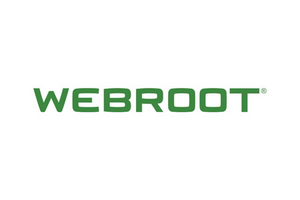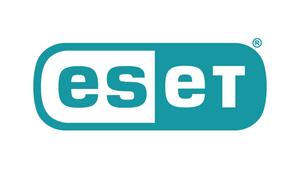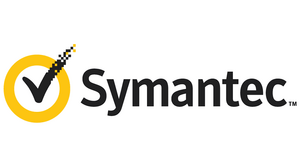Endpoint protection or security software is a class of security products designed to protect devices such as workstations, laptops, and IoT that reside at the edge of an organization’s network. Most solutions require security software installed in a central location with client-side software installed at each endpoint. The configuration enables IT personnel to manage and monitor endpoint usage from a central location, simplifying network security administration.
What is Endpoint Protection Software?
Endpoint protection software refers to cloud-based solutions that offer end-to-end protection for larger organizations or institutions with diverse endpoints. Endpoint security software refers to the on-premise implementation of end-to-end protection. Both configurations offer similar functionality such as firewalls, port and device control, malware protection, and vulnerability assessments.
Endpoint protection is a multi-faceted approach to cybersecurity, combining scanning, antivirus, infiltration prevention, and threat detection capabilities. Endpoint protection suites bring together the cybersecurity features of the following subgroups:
- Antivirus Software. Businesses and individuals use this software to protect against viruses, malware, spyware, and other threat vectors. The software identifies and blocks web-based threats to improve device security.
- Endpoint Management Software. Endpoint management helps IT personnel control endpoint assets through network monitoring and patch management. Managing endpoints provides better visibility and control, improves compliance, and aids standardization.
- Endpoint Detection and Response (EDR) Software. EDR software keeps security personnel informed on possible threats to the network. The tools analyze system behavior to identify abnormalities and anomalies that might indicate a potential threat.
Why Use Endpoint Protection Software?
Every business – no matter how small – is a target. With cybercriminals attempting a cyberattack every 11 seconds, it’s a matter of when rather than if a company will become a target. That’s why using endpoint protection software is essential to building a secure infrastructure for business operations. Specifically, these tools enable organizations to:
- Allow employees to access networks from remote locations using their own devices
- Decrease data breach opportunities through multi-layered security checks
- Deploy security updates and manage security policies through centralized administration tools
- Scan devices in real-time for spyware or malware infiltration
- Automate removal of possible threats
- Provide better visibility into a network’s security infrastructure
Companies face different security threats based on their business. For example, financial services are likely targets for data breaches, while supply chain attacks focus on ransomware. With endpoint protection software, organizations can protect against:
- identity theft
- sophisticated cyberattacks
- unauthorized remote access
- endpoint vulnerabilities
Endpoint protection software helps businesses improve their cybersecurity strategies by identifying vulnerabilities, automating remediation, and scheduling security updates. The tools can assist IT personnel in managing network security by enforcing standard antivirus solutions and simplifying detection and prevention policies.
How Does Endpoint Protection Software Work?
Endpoint protection platforms form an umbrella under which antivirus, EDR, and endpoint management operate. The goal is to protect workflows and data that move from devices to a network, reduce vulnerabilities, and detect and respond to attempted compromises.
The software runs in the cloud or on-premise servers. It has a console or dashboard for interacting with the devices. From this centralized screen, IT personnel can monitor and manage the endpoints.
Protection platforms can control the applications that end-users download or access. Client-side software is placed at the endpoints. Once installed, the platform software pushes updates to the device, authenticates login attempts, and administers corporate policies. Data sent from the device to the central platform may be encrypted.
The advanced approach that endpoint protection software provides gives the corporate network enhanced visibility, more response options, and stronger security postures.
What Features Should Endpoint Protection Software Have?
Every protection software platform has a different set of features, making comparisons difficult. The following checklist can help identify critical capabilities for a given deployment.
- Device Control. Manages network accessibility from endpoints
- Web Control. Filters websites, supports whitelisting, and enforces access policies
- Application Control. Blocks unauthorized access to restricted applications
- Asset Management. Monitors endpoints, activities, and unexpected access attempts
- Disables network connections and deactivates applications
- Protects endpoints from attack
- Detects malware occurrences
- Provides reports on vulnerabilities, infrastructure, and network behavior.
- Enforces security policies, audits asset security, and monitors infrastructure.
At a minimum, endpoint protection software should offer:
- Antivirus, antimalware scanning
- Monitoring of devices and files
- Endpoint network access constraints
- Restricted access to websites and applications
- Controls for configuration and compliance
- Integrated firewall
- Automated updates
Companies must ensure that the solution has the functionality required to meet their specific needs when evaluating protection software.
What Are the Pros and Cons of Endpoint Protection Software?
Other security products may contain tools for endpoint protection, but they rarely offer the end-to-end protection of the endpoint platforms. Here are a few reasons why these solutions are essential for comprehensive security.
Pros
- Centralized security management. IT staff can manage and monitor devices from a single console, reducing time and resources devoted to security management.
- Protection against mobile threats. Endpoint protection should include mobile devices to ensure complete coverage of edge-initiated attacks.
- Fewer security gaps. Better visibility of endpoints on the edge enables personnel to see often overlooked security gaps.
- Simplified operations. Endpoint platforms enable IT and security staff to focus on other responsibilities without compromising edge security.
- Implementation of zero-trust architecture. Strong endpoint security is a cornerstone of zero-trust frameworks that ensure only authenticated entities are granted access.
Well-protected endpoints minimize the risk of cyber incidents that can damage a company’s reputation.
Cons
- Scaling. Managing a few endpoints is different from managing thousands of distributed devices. Not every solution has the resources to scale efficiently and effectively.
- Resources. Endpoint protection software may impact performance. Some platforms are resource-intensive, making it difficult to maintain productivity. It’s essential to evaluate the amount of memory required at the endpoint, server, or cloud.
- Accuracy. Solutions should be accurate, meaning they should not produce false positives or unnecessary aggressive actions. At the same time, they should not produce low detection rates that leave gaps in coverage.
- Administration. Although endpoint protection platforms over a centralized console, that console requires someone to monitor it. For organizations with a team of security specialists, dedicated resources are not an issue; however, smaller organizations may not have the capability to dedicate a resource to endpoint administration.
Deciding on the right platform requires more than finding the best features. It also demands balancing security against available resources to ensure that a network is secure.
Top Vendors
The right endpoint protection solution depends on the organization’s size and the industry in which it operates. For smaller businesses, a set and forget solution with less functionality may be better than a comprehensive solution requiring significant resources.












